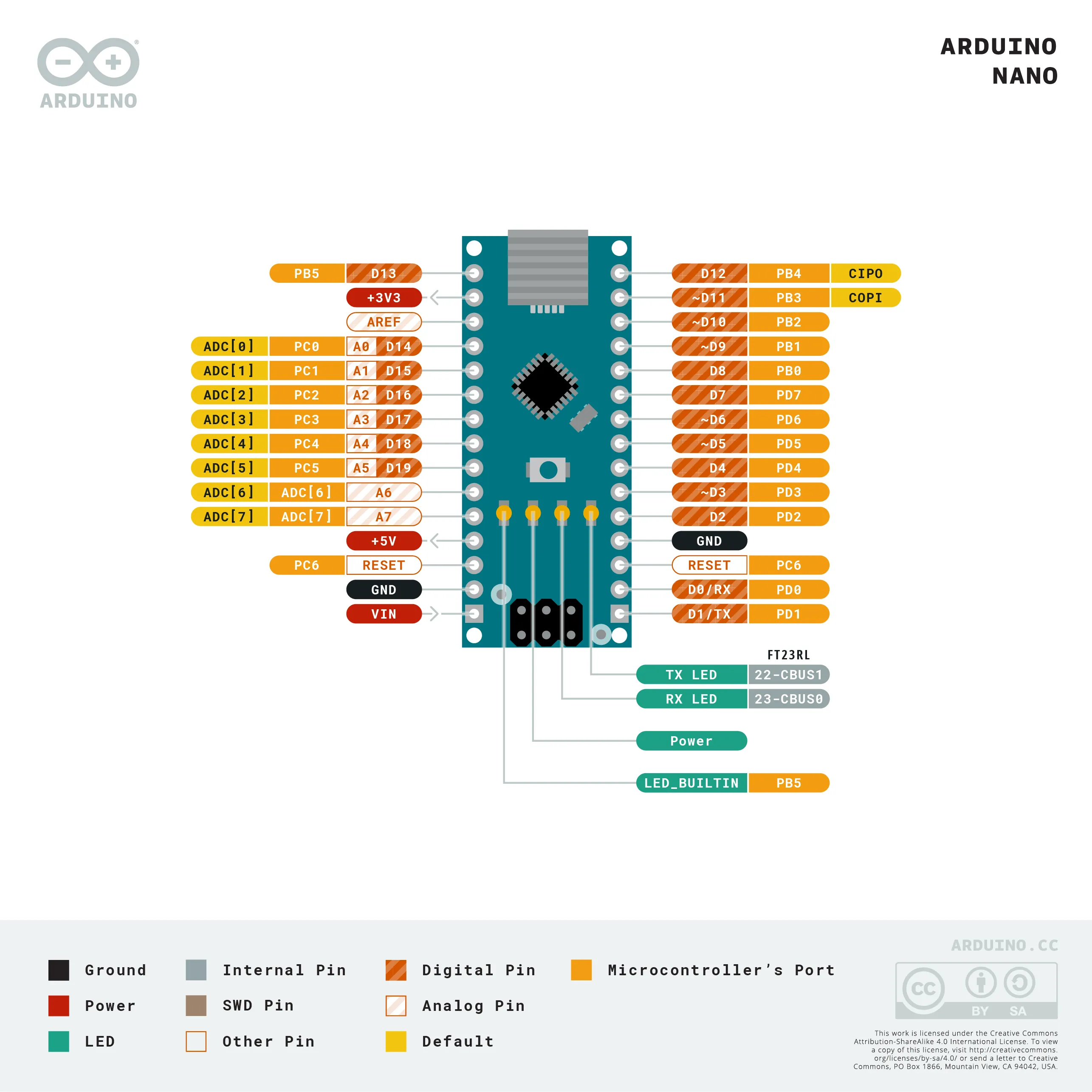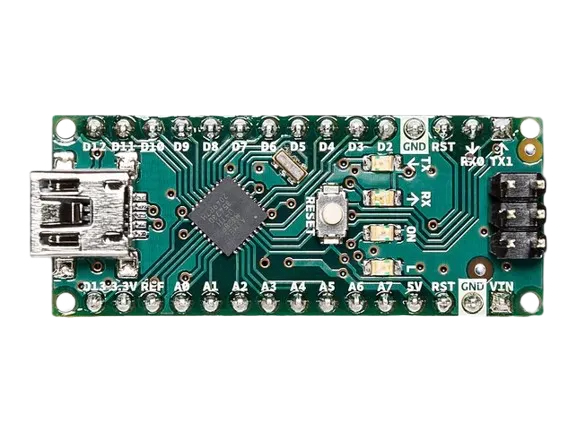The Arduino Nano is a small and versatile microcontroller board from Arduino, ideal for compact projects and wearable technology. It includes 14 digital I/O pins (6 of which can be PWM outputs), 8 analog inputs, and an Atmega328P microcontroller running at 16 MHz.
Pinout Table
| Pin Number | Name | Function | I/O | Voltage Level | Notes |
|---|---|---|---|---|---|
| 0 | D0 | Serial RX (D0) | Input | 5V TTL | |
| 1 | D1 | Serial TX (D1) | Output | 5V TTL | |
| 2 | D2 | Digital | I/O | 5V TTL | |
| 3 | D3 | PWM (AnalogWrite) | I/O | 5V TTL | |
| 4 | D4 | Digital | I/O | 5V TTL | |
| 5 | D5 | PWM (AnalogWrite) | I/O | 5V TTL | |
| 6 | D6 | PWM (AnalogWrite) | I/O | 5V TTL | |
| 7 | D7 | Digital | I/O | 5V TTL | |
| 8 | D8 | Digital | I/O | 5V TTL | |
| 9 | D9 | PWM (AnalogWrite) | I/O | 5V TTL | |
| 10 | D10 | PWM (AnalogWrite) | I/O | 5V TTL | SPI SS |
| 11 | D11 | PWM (AnalogWrite) | I/O | 5V TTL | SPI MOSI |
| 12 | D12 | Digital | I/O | 5V TTL | SPI MISO |
| 13 | D13 | Digital | I/O | 5V TTL | SPI SCK |
| 14 | A0 | Analog Input | Input | 5V | |
| 15 | A1 | Analog Input | Input | 5V | |
| 16 | A2 | Analog Input | Input | 5V | |
| 17 | A3 | Analog Input | Input | 5V | |
| 18 | A4 | Analog Input | Input | 5V | SDA (I2C Data) |
| 19 | A5 | Analog Input | Input | 5V | SCL (I2C Clock) |
| 20 | A6 | Analog Input | Input | 5V | (not a digital pin) |
| 21 | A7 | Analog Input | Input | 5V | (not a digital pin) |
| 22 | VIN | Voltage In | - | 7-12V | External Power Supply |
| 23 | GND | Ground | - | - | |
| 24 | RST | Reset | Input | 5V TTL | Reset the board |
| 25 | 3V3 | 3.3V Output | - | 3.3V | |
| 26 | 5V | 5V Out | - | 5V |
Pinout Diagram

Key Features
- Compact form factor suitable for smaller projects and wearable tech.
- 14 Digital input/output pins with 6 PWM channels.
- 8 Analog input pins.
- On-board USB interface for easy programming and power.
- I2C and SPI communication available for interfacing.
- Atmega328P microcontroller with 16 MHz clock.
- 32 KB Flash memory, 2 KB SRAM, and 1 KB EEPROM.
Usage Scenarios
The Arduino Nano is perfect for:
- Compact or wearable tech projects.
- Learning electronics and programming on a smaller scale.
- Rapid prototyping in tight spaces.
- IoT applications where size is a constraint.
- Sensor-based projects that need a small form factor.
Safety Precautions
- Avoid supplying more than 5V to prevent damage.
- Handle with care, considering ESD precautions.
- Disconnect from power when making changes.
- Avoid short circuits and ensure proper pin connections.
- Always work in a clean, dry environment.

